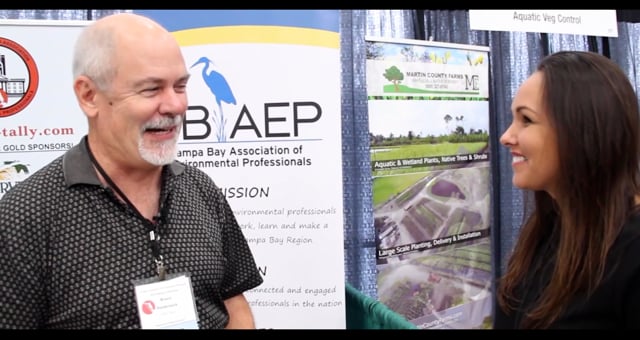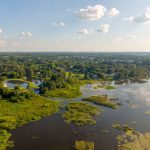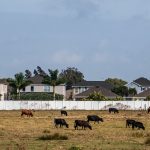Wetland Mitigation and Species Conservation in Florida
Transcript
Victoria:
So a wetland mitigation bank, as you know, is a protected land. And it’s an average acreage of about 1,000. They range anywhere from 300 acres to 25,000 acres within the state of Florida. And a wetland mitigation bank is not just a great site. It needs to be degraded. We need to bring it back up to its natural state. So if we find a suitable mitigation bank, it’s not easy to find. But if you ever do with one of your clients or your landowners that you work with finding the suitable type of a mitigation bank would be… It’s adjacent to other conservation land. It has a lot of restoration value. It’s adjacent to other conservation lands. Those are the things that we’re looking for. We are looking for the missing corridor, county owned land, state owned land surrounding it. And now we’re not going to use the taxpayers dollar.
Victoria:
This private landowner is going to put his land under a conservation easement. So it’s forever protected in lieu of developing the land. And one of the big things that provides the lift that gives you more credits is that restoration value. So it’s very, very important to have that lift, is the most important thing. There are approximately 87 federal mitigation banks permitted in the state of Florida and about 123 or so state only banks. Some banks are state only some are federal only, but the majority are state and federal. And if you are going to be permitting a mitigation bank, that’s where you want to be. You want a state and federally approved mitigation bank. And I’ll tell you why. If I have an applicant such as your clients, you contact me and say, I have this project located at such and such address. My client needs options for a mitigation.
Victoria:
What do I do? Number one, I’ll look into the market, which mitigation banks can service that vicinity, that drainage basin that watershed. And then we will gather costs and we’ll look at the availability. And it’s very, very important to be able to provide both the state and federal mitigation credits. Because if this project, your project only needs state only great, but what if it needs state and federal, and now with the crazy new WOTUS changes, which I think will just be changing the rest of our lives, which it has for my entire life and yours as well. I’m sure. And [crosstalk 00:03:04].
Speaker 2:
So Victoria, your presentation is on the screen. Gina has got it. And you just have to tell her which slide you’re on and next. So she’ll go through it for you.
Victoria:
Thank you.
Speaker 2:
Okay.
Victoria:
Okay. Well let’s just go through it really quick, let’s go to page… What is a wetland mitigation bank? That’s just what I was speaking on. The next one, do you see that beautiful site? Are you there?
Speaker 2:
Yes, I see it.
Victoria:
Okay. Great. That’s Reedy Creek Mitigation Bank. Reedy Creek is 3,500 acres. It’s absolutely amazing. This is phase three of the bank. And so you don’t have to do all the phases all at the one time. If it’s large, like 3000 acres, you can do them in phases and the restoration activities can be done at different types of the phases of the project. So this is what I was saying before 87, federal banks, 123 state banks, approximately… I’m not sure how many state pending banks there are, but there’s 41 federal about currently in the hopper. And they do not get permitted quickly. Mitigation banks take anywhere from three to seven years to get permitted, to get a mitigation banking instrument from the [inaudible 00:04:29] engineers. Now with the state, you would go to the water management district where your land is located, unless you have some discrepancy,
Victoria:
and then you can go to FDP. But majority of the time you’ll be permitted by your water management district. So if I’m in Boca Raton, my property will be located in South Florida Water Management District. And you have to get both. So the reason that you need both state and federal credits is to be able to provide credits to every applicant. You don’t want to miss not providing mitigation to an applicant because you don’t have the federal mitigation. And like I said with WOTUS changing. Now, there’s going to be more regulations and more wetlands incumbents in the rules. So more mitigation will be needed. All right, this is a map of state mitigation banks within the state of Florida. You can see where they’re located. Here’s the Federal wetland mitigation. So the activities that are needed to be able to get credits are putting a conservation easement on the land.
Victoria:
Things like restoring the hydrology, removing invasive species, subscribe fire burning, plant native species, and the credits are awarded per activity, such as this credit release schedule. So this is a credit release schedule for about 400 acres. They got 56 credits. So you can do the math and see how many credits they got per acre of impact. And let’s do the math. I wanted to say this was seven. It’s never the same. Yep. Seven. So 7.06. So 7.06 acres are restored and preserved to generate one mitigation credit. Now we get 56. We don’t get all 56 at once. We have to do this five to six year credit release schedule. So the first thing I’m going to do is I’m going to get my bank permitted. I’m going to put a financial assurances over it, financial assurances. I’m going to put a conservation easement over it. I’m going to put financial assurances down short term and long term. Short term is 110% of the construction costs of your project.
Victoria:
Therefore, if your construction costs are a million dollars, you have to put up 1.1 million, when you have to do long term, that is a fee that’s established between the agencies. And that will be put up in perpetuity. That money stays in a fund that stays with that mitigation bank permit number. And it will stay in property of that mitigation bank to be able to forever maintain it in perpetuity. Then the next release would happen after we do such activities such as installing them the low water crossings and earth and ditch blocks. With those activities, we per provide that to the state and federal agencies. And we say, okay, we did this. Now we get another 14 credits and so on. You can see we get another 2.8 credits to sell after we remove the evasive. So it’s activity based.
Victoria:
So mitigation banks are so important because the mitigation is being done prior to offsets, which is really cool, which is the reason for no net loss of impacts. Mitigation provides a compensation to wetland impacts. In full, you’re not proposing onsite or offsite that needs to be evaluated case by case basis for application. This bank is permanent. This bank is approved. It’s been vetted. I told you, it takes three to seven years to get this thing issued. It’s going through a lot of scrutiny with the state and federal agencies. So it is well maintained. It has a lot of assurances, financial, environmental backing it. It’s a solid plan to be able to provide for wetland impacts, okay. Wetland impact. So like we said before, I got an applicant and they need mitigation. Okay. Let’s just pretend it’s a driveway because we provide mitigation as you know, for anything from a driveway to the Orlando airport to I4, you name it or to Anaheim.
Victoria:
I mean, it’s everything. And every project is individual and interesting and has its challenges. Sometimes the very, very small projects sometimes take more work than the very, very large projects, but it all works out in the end. But basically what I need from you, if you have property that needs mitigation and they are wetland impacts, potentially I need to know the location such as the address or the parcel ID, or just a vicinity that will help me locate which drainage, basin and watershed the project is located in. Okay. I’m also going to need to know an estimated acreage that you intend to impact or square feet. It could be as small as you want to impact, a lot of people ask me that, can I impact less than an acre? Yes Please. You can impact as small as you want, but you will have to mitigate for whatever impact that you have.
Victoria:
Now, the most important thing about determining how many credits that you need, how much is mitigation will cost me is the quality of the wetland that is potentially being impacted, it has nothing to do with my mitigation bank. As far as how many acres did I get per credit. It’s a huge, common misconception. It’s all on your project. So what are the potential wetland impacts for your project. And as you all know, there’s a UMAM score, and it’s zero to one. And depending on the quality of your wetland, will determine how many credits you need. So let’s give a basic exercise. I do my address. I’m in basin X, let’s just say basin 18 St. John’s river basin, and I have one acre of impact. And the mitigation credits in that vicinity are $120,000 of credit, let’s say, okay.
Victoria:
And I need one acre of impact. And my wetland impact is average. Okay. It’s a 0.6, which means that it’s not low quality. It’s not high equality. It’s right through the middle, mitigation credits would be about $72,000 to impact one acre of impact. So now we know the price. This is very, very important for due diligence. Especially these homeowners that they buy the property and they’re, oh my God, I’ve just spent $30,000 in mitigation. It’s good for them to understand before they buy it, after they buy it at all times. So wetland mitigation, it’s funny. You really become an expert when it comes across
your plate, I’ve had developers and real estate agents and you name it say, I’ve been in this industry for 45 years in Florida, and I’ve never even heard of wetland mitigation.
Victoria:
So it’s the best kept secret, I think. And I think the industry needs more exposure because the normal layman person doesn’t even understand what a wetland is or a mitigation credit for that matter. Mitigation credit, as we talked about is derived from enhancement preservation and creation activities, as well as restoration. And your quality of your wetland is determined on location and landscape. Where is your property? Is it surrounded by development or is it surrounded by conservation? Because if it’s surrounded by conservation, the UMAM score goes up. If it’s surrounded by residential, commercial development score goes down. Water environment and community structure, same story. Looking at the quality of the wetland, determines a lot. Mitigation credit does not equal an acre. Another misconception in the public. I have one acre of impact,
Victoria:
I need one credit. Nope, you’re good. You don’t need that money. You probably need, 0.3 to 0.7. And if a mitigation credit is 100,000, depending on the quality of your wetland, it’s going to range from $30,000 to $70,000 an acre of impact. So let’s find out that UMAM score so we can figure out because $30,000 to $70,000 is a big discrepancy. So that’s why the environmental consultants, you are so important because that’s what they need. They need A, of course, to get the [inaudible 00:13:29] submitted to you, do a wetland delineation in them, and the most important thing that you can provide them to assist me in my job is provide them a UMAM calculation. And I need to ask them to get it. They’ll have a wetland delineation, but they’ll have no idea what the quality of the wetland is.
Victoria:
And I can’t do anything with them until I have that information. So when I have UMAM score, I am able to understand how many credit that they’ll need based off of the acreage, of course. So you take the acreage times the UMAM score, and that’s how many credits that you need. All right, I’m going to try to get this quickly because I want to make sure I have enough time for questions and answers, but real quick, Florida has 86 drainage basins within the five water management districts. I actually counted each one and I actually did a report on all 86 drainage basins showing every single mitigation bank in those basins, the current inventory, the pricing, the historic absorption over the past seven years, all these different things. So I have a lot of data. So if you ever need anything pertaining to wetland mitigation or species conservation, contact me and I can help you for sure.
Victoria:
So here’s all those water management district base and maps, as you can see SJRWMD they have 23 basins. And one thing just to node out is if these basins are hashed like slashed, that means that they’re nested. That means that they’re more environmentally sensitive than the other basins and mitigation is very much preferred to stay in basin. Now, normally we want them in basin regardless, but if it’s nested, it’s critical. Here is SWFWMD, they have 16 basins. SWFWMD has really come so far in mitigation banking, probably I don’t know, 10 or 15 years ago… Let’s just say 10, there weren’t that many mitigation banks in this vicinity. And now there are so many, so there’s been a real big influx in the availability of mitigation options in SWFWMD also called Southwest Florida Water Management District. So, that’s been fabulous. South Florida Water Management District, they’re leading the charge, of course, they have 32 basins within their district. And then SRWMD river has eight up there in the upper coat. And then we have Northwest Florida, which has 1, 2, 3, 4, 5, 6, 7.
Victoria:
Okay, well, we have five minutes left. So let’s go away from this. Well, let’s just touch on it, it’s so much fun. All right. Habitat conservation bank, so much different than a wetland mitigation bank. So wetland mitigation bank, we want degraded land. We fix broken swamps, right? Habitat conservation. We want it pristine. We want land that has lots of species on it, such as the Sand Skink, Scrub Jay, the Florida Panther. Here’s that Florida Panther. There’s about 100 in the state of Florida. Absolutely amazing animals. Like I said, the Florida Panther, the Sands Skink and the Scrub Jay. Those are the three species that are mitigated for in the state of Florida. Of course you have to go for tortoises, but that’s actually relocated, the Panther and Sand Skink and Scrub Jay are not relocated. You’re just purchasing mitigation credits to be able to impact that property.
Victoria:
And then as you probably are already aware for species impacts, you don’t have a UMAM score. You have more of a ratio. It’s a lot more straightforward. You need two credits for every acre of impact. If you have Sand Skink or Scrub Jay impacts. For Panther habitat impacts, which is more on South Florida Water Management District, you need seven credits. They’re called PHU Panther, Panther habitat units for every acre of impact. So it’s totally different. And that’s pretty interesting. Restoration activities that are done on conservation banks are mitigation bank, the preservation, the conservation easements, controlling exotics plants facilitating natural re vegetation and other things that you can do to get the credits awarded. And then the surface area showing Sand Skinks. It’s the whole lake Wales Ridge. Every single conservation bank that’s permitted for Sand Skink in Florida has the exact same service area.
Victoria:
Here’s the Panther primary and secondary zones, which is pretty interesting. And then this, we’re going to just fly by, because I’m sure we already gone through that. It takes two to seven years. It’s very, unpredictable. The new WOTUS rule. I actually wrote this. I did not update this. That’s me, of course that was the old WOTUS rule. So this slide is not correct, because I did this prior to August 30th when everything changed with WOTUS, okay. Credit sales really quick. If you ever need mitigation credits, please call me relationships matter. I take that very seriously. Being efficient and knowledgeable in the marketplace is very important. You can have out of the box thinking, being able to explain the process better to a landowner is very valuable.
Victoria:
And I keep all accurate information to understand every single project because I have 100 projects currently under reservation. So a lot of thanks to track, this is more about credit ledgers. If you are a mitigation banker, if you want to be a mitigation banker, you want to represent a mitigation banker. My advice is just how important it is to have a very tight credit ledger for both state and federal. State and federal agencies maintain their own. But for oversight, you need to have your internal ledger and make sure that that is solid proof because the worst thing that can happen to a mitigation bank is to oversell their credits.
Victoria:
And this is just, if you need mitigation credits the process it takes. Amazing sites. If you ever needed a resource on mitigation banks, you go to RIBITS. Phenomenally, you can find out everything for the whole entire country mitigation banks, who the contact is, what the absorption is, the ledgers, all public information. You go to a cyber respiratory little link. It shows you all the documents, the MBI, the prospectus, everything you can think of. So very, very big resource. And then let’s switch this and let’s go to questions and see if we have any, thank you so much. And I’m so sorry for that little hiccup.
Speaker 2:
No problem. Gina was able to show your slides [crosstalk 00:20:26].
Victoria:
Thank you.
Speaker 2:
… And follow you.
Victoria:
Thank you.
Speaker 2:
She came to our rescue. We do have a couple of questions. Let’s do this. There’s two in the box that we can answer quickly. We do have something that starts at two, but here’s the first question [crosstalk 00:20:39].
Victoria:
… we have one question.
Speaker 2:
Do the numbers of state and federal mitigation banks in Florida that you mentioned include mitigation banks for non wetland impacts ie Marine resources?
Victoria:
No.
Speaker 2:
Okay.
Victoria:
And I don’t understand what… So Marine resource impacts, I’m assuming maybe Katie you mean seagrass, I don’t know, but seagrass, yes. There is a new emerging market. There are no permitted seagrass mitigation banks currently, but there’s about two or three that are pending and there’s a huge market for that. So that’s going to be a phenomenal restoration for the seagrass, which are so important.
Speaker 2:
Yes. Seagrasses are a challenge for sure. Especially down near south Florida.
Victoria:
Yes. Yes.
Speaker 2:
We have one other question that says, how is the credit price determined? Does it vary?
Victoria:
I love this question. So it’s completely market driven. It’s not governed by any state or federal agency. And, basically how it really works is… Let’s say you were able to do your own mitigation on offsite. What’s that going to cost you and a mitigation banker wants to be competitive with that number. So they’ll take, how much is it going to cause them to get 20 acres to be able to mitigate for their one acre of impact? Is it $1,000, $2,000 an acre in that vicinity? I don’t know. And that, of course, location, location, location, the price of that land is going to result in a higher price with mitigation credits. So the vicinity of the land is going to be more expensive in Tampa versus in the Panhandle. Okay. But the main thing that you want to look at is your competition.
Victoria:
What other players in the market, how much are they priced at? You are the price that they already price it lower. It’s as easy as that. Now, if there are no mitigation banks in the vicinity and you’re the first, you really can charge whatever you want, whatever the market will bear. Seagrass credits, they’re going to go for a million dollars of credit. Okay. [inaudible 00:22:48] credits. I don’t think they ever sold, but they were for sale for a million dollars. You know what I mean? It doesn’t mean anyone’s going to buy them, being able to afford them, but they’re there. And the more expensive mitigation credits are, the better it is for our environment, because it really creates a barrier to entry, to be able to impact those wetlands. So if a developer comes and they say, oh my God, it’s going to cost me $300,000 to impact this. I’m going to another site. It makes it less easy for these developers to impact our precious resources. So the higher the price I say the better.







